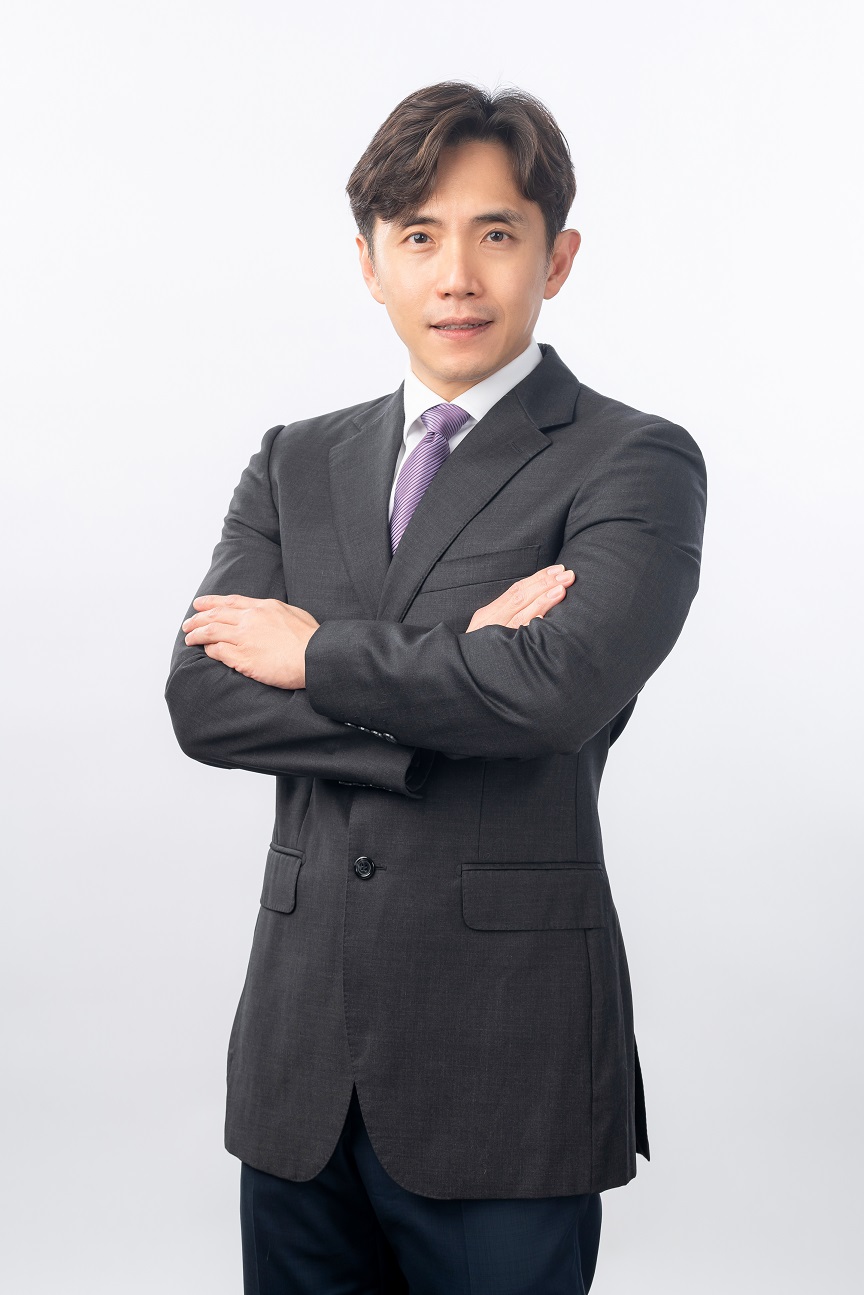-
Internal audit
In today's increasingly competitive and regulated market place, organisations - both public and private - must demonstrate that they have adequate controls and safeguards in place. The availability of qualified internal audit resources is a common challenge for many organisations.
-
IFRS
At Grant Thornton, our International Financial Reporting Standards (IFRS) advisers can help you navigate the complexity of financial reporting so you can focus your time and effort on running your business.
-
Audit quality monitoring
Having a robust process of quality control is one of the most effective ways to guarantee we deliver high-quality services to our clients.
-
Global audit technology
We apply our global audit methodology through an integrated set of software tools known as the Voyager suite.
-
Looking for permanent staff
Grant Thornton's executive recruitment is the real executive search and headhunting firms in Thailand.
-
Looking for interim executives
Interim executives are fixed-term-contract employees. Grant Thornton's specialist Executive Recruitment team can help you meet your interim executive needs
-
Looking for permanent or interim job
You may be in another job already but are willing to consider a career move should the right position at the right company become available. Or you may not be working at the moment and would like to hear from us when a relevant job comes up.
-
Practice areas
We provide retained recruitment services to multinational, Thai and Japanese organisations that are looking to fill management positions and senior level roles in Thailand.
-
Submit your resume
Executive recruitment portal
-
Update your resume
Executive recruitment portal
-
Available positions
Available positions for executive recruitment portal
-
General intelligence assessments
The Applied Reasoning Test (ART) is a general intelligence assessment that enables you to assess the level of verbal, numerical reasoning and problem solving capabilities of job candidates in a reliable and job-related manner.
-
Candidate background checks
We provide background checks and employee screening services to help our clients keep their organisation safe and profitable by protecting against the numerous pitfalls caused by unqualified, unethical, dangerous or criminal employees.

-
Capital markets
If you’re buying or selling financial securities, you want corporate finance specialists experienced in international capital markets on your side.
-
Corporate simplification
Corporate simplification
-
Expert witness
Expert witness
-
Family office services
Family office services
-
Financial models
Financial models
-
Forensic Advisory
Investigations
-
Independent business review
Does your company need a health check? Grant Thornton’s expert team can help you get to the heart of your issues to drive sustainable growth.
-
Mergers & acquisitions
Mergers & acquisitions
-
Operational advisory
Grant Thornton’s operational advisory specialists can help you realise your full potential for growth.
-
Raising finance
Raising finance
-
Restructuring & Reorganisation
Grant Thornton can help with financial restructuring and turnaround projects, including managing stakeholders and developing platforms for growth.
-
Risk management
Risk management
-
Technology & Digital Services
Technology Services
-
Transaction advisory
Transaction advisory
-
Valuations
Valuations
-
Human Capital Consulting
From time to time, companies find themselves looking for temporary accounting resources. Often this is because of staff leaving, pressures at month-end and quarter-end, or specific short-term projects the company is undertaking.
-
Strategy & Business Model
Strategy & Business Model
-
Process Optimisation & Finance Transformation
Process Optimisation & Finance Transformation
-
System & Technology
System & Technology
-
Digital Transformation
Digital Transformation
-
International tax
With experts working in more than 130 countries, Grant Thornton can help you navigate complex tax laws across multiple jurisdictions.
-
Licensing and incentives application services
Licensing and incentives application services
-
Transfer pricing
If your company operates in more than one country, transfer pricing affects you. Grant Thornton’s experts can help you manage this complex and critical area.
-
Global mobility services
Employing foreign people in Australia, or sending Australian people offshore, both add complexity to your tax obligations and benefits – and we can guide you through them.
-
Tax compliance and tax due diligence review services
Tax compliance
-
Value-Added Tax
Value-Added Tax
-
Customs and Trade
Customs and Trade
-
Service Line
グラントソントン・タイランド サービスライン
-
Business Process Outsourcing
Companies, large and small, need to focus on core activities. Still, non-core activities are important, and they need to be leaner and more efficient than most companies can make them sustainably. For Grant Thornton, your non-core activities are our core business. Grant Thornton’s experienced outsourcing team helps companies ensure resilience, improve performance, manage costs, and enhance agility in resourcing and skills. Who better to do this than an organisation with 73,000 accountants? At Grant Thornton we recognise that that outsourcing your F&A functions is a strategic decision and an extension of your brand. This means we take your business as seriously as we take our own.
-
Technology and Robotics
We provide practical digital transformation solutions anchored in business issues and opportunities. Our approach is not from technology but from business. We are particularly adept at assessing and implementing fast and iterative digital interventions which can drive high value in low complex environments. Using digital solutions, we help clients create new business value, drive efficiencies in existing processes and prepare for strategic events like mergers. We implement solutions to refresh value and create sustainable change. Our solutions help clients drive better and more insightful decisions through analytics, automate processes and make the most of artificial intelligence and machine learning. Wherever possible we will leverage your existing technologies as our interest is in solving your business problems – not in selling you more software and hardware.
-
Technical Accounting Solutions
The finance function is an essential part of the organisation and chief financial officer (CFO) being the leader has the responsibility to ensure financial discipline, compliance, and internal controls. As the finance function is critical in every phase of a company’s growth, the CFO role also demands attention in defining business strategy, mitigating risks, and mentoring the leadership. We offer technical accounting services to finance leaders to help them navigate complex financial and regulatory environments, such as financial reporting and accounting standards, managing compliance requirements, and event-based accounting such as dissolutions, mergers and acquisitions.
-
Accounting Services
Whether you are a local Thai company or a multinational company with a branch or head office in Thailand you are obliged to keep accounts and arrange for a qualified bookkeeper to keep and prepare accounts in accordance with accounting standards. This can be time consuming and even a little dauting making sure you conform with all the regulatory requirements in Thailand and using Thai language. We offer you complete peace of mind by looking after all your statutory accounting requirements. You will have a single point of contact to work with in our team who will be responsible for your accounts – no matter small or large. We also have one of the largest teams of Xero Certified Advisors in Thailand ensuring your accounts are maintained in a cloud-based system that you have access to too.
-
Staff Augmentation
We offer Staff Augmentation services where our staff, under the direction and supervision of the company’s officers, perform accounting and accounting-related work.
-
Payroll Services
More and more companies are beginning to realize the benefits of outsourcing their noncore activities, and the first to be outsourced is usually the payroll function. Payroll is easy to carve out from the rest of the business since it is usually independent of the other activities or functions within the Accounting Department. At Grant Thornton employees can gain access to their salary information and statutory filings through a specialised App on their phone. This cuts down dramatically on requests to HR for information by the employees and increases employee satisfaction. We also have an optional leave approval app too if required.
-
 IBR Optimism of Thailand Mid-Market Leaders Suggests Potential Underestimation of Challenges Ahead: International Business Report, Q1 2024Bangkok, Thailand, April 2024 — The Grant Thornton International Business Report (IBR) for Q1 2024 unveils a strikingly optimistic outlook among Thailand's mid-market business leaders, juxtaposed with the looming challenges that will shape the nation's economic future. With a Business Health Index score of 13.5, Thailand outperforms its ASEAN, Asia-Pacific, and global counterparts, signaling a robust confidence that may overshadow critical issues such as demographic changes, skills shortages, and the necessity for digital advancement.
IBR Optimism of Thailand Mid-Market Leaders Suggests Potential Underestimation of Challenges Ahead: International Business Report, Q1 2024Bangkok, Thailand, April 2024 — The Grant Thornton International Business Report (IBR) for Q1 2024 unveils a strikingly optimistic outlook among Thailand's mid-market business leaders, juxtaposed with the looming challenges that will shape the nation's economic future. With a Business Health Index score of 13.5, Thailand outperforms its ASEAN, Asia-Pacific, and global counterparts, signaling a robust confidence that may overshadow critical issues such as demographic changes, skills shortages, and the necessity for digital advancement. -
 Workshop Corporate Strategy and Company Health Check WorkshopThroughout this workshop, we will delve into the life cycle of companies, examining the stages of growth, maturity, and adaptation. Our focus will extend to the current business environment, where your Company stands today, and how our evolving strategy aligns with the ever-changing market dynamics.
Workshop Corporate Strategy and Company Health Check WorkshopThroughout this workshop, we will delve into the life cycle of companies, examining the stages of growth, maturity, and adaptation. Our focus will extend to the current business environment, where your Company stands today, and how our evolving strategy aligns with the ever-changing market dynamics. -
 Tax and Legal update 1/2024 Introducing the New “Easy E-Receipt” Tax scheme with up to THB 50,000 in Tax DeductionsThe Revenue Department has introduced the latest tax scheme, the “Easy E-Receipt”, formerly known as “Shop Dee Mee Kuen”. This scheme is designed to offer individuals tax deductions in 2024.
Tax and Legal update 1/2024 Introducing the New “Easy E-Receipt” Tax scheme with up to THB 50,000 in Tax DeductionsThe Revenue Department has introduced the latest tax scheme, the “Easy E-Receipt”, formerly known as “Shop Dee Mee Kuen”. This scheme is designed to offer individuals tax deductions in 2024. -
 TAX AND LEGAL Complying with the PDPA – A Balancing ActOrganisations must be aware of the circumstances in which they are allowed to collect data to comply with Thailand’s Personal Data Protection Act.
TAX AND LEGAL Complying with the PDPA – A Balancing ActOrganisations must be aware of the circumstances in which they are allowed to collect data to comply with Thailand’s Personal Data Protection Act.
Francesca Lagerberg, Grant Thornton International’s global leader – network capabilities, has been heading up our Women in business reports for 15 years. She reveals the progress she has seen, and what more needs to happen.
| Q: Over the 15 years that you’ve been at the forefront of Grant Thornton International’s Women in Business reporting, how do you think gender diversity has progressed? |
|
Glacially. The figures are still wildly disappointing in comparison to the opportunities; the sad fact is there has been no significant movement in a positive direction over the time I’ve been involved with the project. |
|
Q: Why do you think, despite all the media attention and positive initiatives, things have failed to move on? |
|
It’s very hard to shift to a gender diverse senior leadership if the pool below doesn’t have a range of talent to take that role on, and it can take a few years to get the right candidates in place. Plus, old habits die hard: the reality is a lot of people tend to promote or encourage people who are like them, so it takes real determination to drive change. The situation is also a reflection of women just not wanting to take on the senior roles, either because they’re not that appealing or don’t sit with what they’re looking for, or they feel that there aren’t roles where they would feel wanted or welcome. It requires a matrix of different things happening to make senior management attractive, to encourage people to go for opportunities where they don’t see great role models. Plus the simple realisation that it is something that they really can achieve. |
|
Q: Where there have been gender diversity successes, what have been the factors behind them? |
|
You tend to find that various initiatives kick-start activity, but where you see a difference is when things are rigorously followed through, where there’s a real commitment from the senior leadership. It filters right the way through an organisation, it becomes part of business as usual and everybody knows, this is how we do things. |
|
Q: What do you see as the practical actions businesses can take to make a difference? |
|
They need to call out the issue. Having senior leaders, male and female, talking about diversity in a very open way allows whatever might be the blocker within a particular organisation to be more understood. It’s then about having a strong pool of people coming through an organisation. If you don’t have diversity in your talent intake, it’s really hard to have diversity at senior levels. It’s also about encouraging a diverse range of people to continue on in high-level roles. A lot of research shows that men and women respond differently to those opportunities. It’s a generalisation, but you do tend to find women like to be asked to go for these roles; whereas a man might think they had a good chance and give it a go, women like to be encouraged. It requires the senior leadership to think carefully about how to allow everybody to reach their full potential. |
|
Q: Gender diversity has been accepted as the right thing to do, but is it recognised as the right thing for business? |
|
There is a lot of research showing a correlation between encouraging diversity of thinking at senior level and success as a business. It’s really hard to show causation, but correlation is possible: diversity, at a senior leadership level, tends to mean that the business outperforms the market. Common sense suggests that if you have a bunch of people who are very similar-minded, with very similar backgrounds, there’s going to be less useful challenge at that leadership table. Constructive conflict can help people to look at different risk angles, consider other opportunities, so it opens up opportunities. Innovation, inevitably, means that businesses are at least looking at a broader range of things which may help them succeed in what is a particularly volatile commercial environment. |
|
Q: What obstacles have you personally had to overcome in order to reach and maintain a senior level? |
|
I tended to be the sole female in the room in so many meetings; I actually thought it was the norm. It was while before I realised, it doesn’t have to be like this. For myself, I look to the generation that follows me and at the people coming through, and I see this amazing range of talent spread across all genders, all backgrounds. In an ever-changing world, what we need are people that are able to navigate their way through the complexities. I look to the future and say, why would you want to have an approach that didn’t embrace diversity? It is the only way to build a team that can succeed. |
|
Q: What’s your message to those business leaders reading our Women in business report? |
|
The first thing is to acknowledge that it has a value; and to speak out around the opportunities diversity can bring in all its guises. The real win is how it engages both the power you’ve got in your business already, and also how it attracts talent. There are great people just waiting to join an organisation that gives them the opportunities they’re looking for. If you’re not offering those opportunities, that great talent will simply go elsewhere. The key to all this is around diversity of thinking as well as gender diversity. In terms of hard figures, it’s much easier to get male-female ratio and the research shows that if you get a more gender balanced organisation, you tend to be more successful, but you also tend to be making decisions with a more deeply rooted and rounded view of the world. |
|
Q: Within the Grant Thornton network, what diversity success stories do you see? |
|
I’m always pleasantly surprised when I go to different parts of the world and see fantastic things happening. For example, going to the Middle East and meeting a group of women who are trying to drive change in a region not traditionally known for its gender diversity. And in countries which already have great diversity, parts of Asia, parts of Russia, they are surprised at why all businesses aren’t doing this. It’s refreshing to see businesses that have really embraced gender diversity, where it’s been part of their culture for many years. It’s a wake-up call parts of the world where gender diversity is seen as radical, that elsewhere it’s just how ambitious business is done |
Read our Women in business report or return to Champions home.


